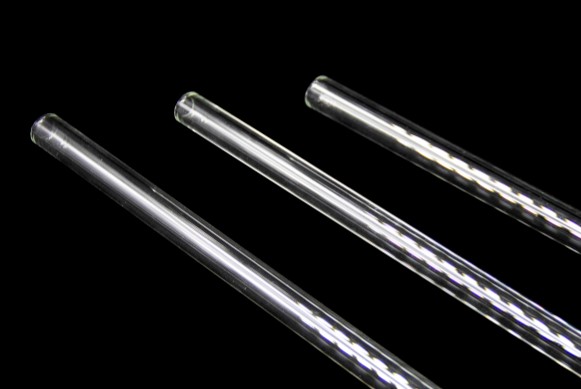What is Infrared Optical Quartz Glass
Click:
-Time:2022-10-18 15:56
Quartz glass is the basic material for optical fiber production, because it has good ultraviolet transmission and low visible and near-infrared absorption. In addition, the thermal expansion coefficient of quartz glass is small. It has good chemical stability, bubbles, stripes, homogeneity and birefringence comparable to ordinary optical glass. It is a good optical material in harsh environment.

(Infrared optical quartz glass) JGS3
Quartz glass made from crystal or high-purity quartz sand by vacuum pressure furnace (electric melting method) contains dozens of PPM metal impurities. But it has small bubbles, particle structure and stripes, almost no OH, and high infrared transmittance. The light transmittance exceeds 85%. The application range is 260-3500 nanometer optical materials.
There is also a full band optical quartz glass in the world. The application wave band is 180-4000nm, and it is produced by plasma chemical phase deposition (anhydrous and H2). The raw material is high-purity SiCl4. Adding a small amount of TiO2 can filter out the ultraviolet ray of 220nm, which is called ozone free quartz glass. Because ultraviolet light below 220 nm can change oxygen in the air into ozone. If a small amount of titanium, europium and other elements are added into the quartz glass, the short wave below 340nm can be filtered out. The electric light source made of the utility model has a health care effect on human skin. This glass can be completely bubble free. It has a very good ultraviolet transmittance, especially in the short wave ultraviolet region, which is far superior to all other glasses. The transmissivity at 185 nm is 85%. It is an excellent optical material in the optical band of 185-2500nm. Because this glass contains OH group, its infrared transmittance is poor, especially there is a large absorption peak near 2700nm.
Compared with ordinary silicate glass, transparent quartz glass has excellent transmissivity in the whole wavelength range. In the infrared region, the spectral transmissivity is higher than that of ordinary glass, and in the visible region, the transmissivity of quartz glass is higher. In the ultraviolet region, especially in the short wave ultraviolet region, the spectral transmittance is far superior to other types of glass. Spectral transmittance is affected by three factors: reflection, scattering and absorption. The reflectivity of quartz glass is generally 8%, with large ultraviolet region and small infrared region. Therefore, the light transmittance of quartz glass generally does not exceed 92%. The scattering of quartz glass is very small and can be ignored. Spectral absorption is closely related to the impurity content and production process of quartz glass. The transmissivity below 200nm represents the content of metal impurities. The 240 nm absorption represents the number of anoxic structures. It can be seen that the absorption in this band is caused by transition metal ions, and the absorption at 2730nm is the hydroxyl absorption peak, which can be used to calculate the hydroxyl absorption peak.
Related articles
- Far Ultraviolet Optical Quartz Glass - JGS1
- The performance of tempered glass is several times higher tha
- How to distinguish quartz from ordinary glass
- Chemical properties of transparent quartz glass
Recommend
- Far Ultraviolet Optical Quartz Glass - JGS1
- What is Infrared Optical Quartz Glass
- Precautions for Use of Quartz Glass
- Methods to Reduce Glass Weathering
- Reasons for Glass Weathering
- Precautions for Use of Quartz Glass
- Technical Indexes of Mirror Glass
- Packaging Marking, Packaging and Transportation of Glass
- Cutting High Temperature Resistant Glass
- Performance of Borosilicate Glass Mirror
Rank
- Application of high temperature resistant glass
- Precautions in the process of quartz tube cutting and picklin
- What Glass Has the Highest Temperature Resistance
- Importance of Optical Glass Lens
- What are the advantages and disadvantages of quartz tube heat
- ultra-thick tempered sight glass for submarine
- What is Infrared Optical Quartz Glass
- The process of toughening of borosilicate tempered sight glas
- The difference between high borosilicate glass, medium borosi
- Where is high pressure resistant glass used?
Latest articles
- Far Ultraviolet Optical Quartz Glass - JGS1
- What is Infrared Optical Quartz Glass
- Precautions for Use of Quartz Glass
- Methods to Reduce Glass Weathering
- Reasons for Glass Weathering
- Precautions for Use of Quartz Glass
- Technical Indexes of Mirror Glass
- Packaging Marking, Packaging and Transportation of Glass
- Cutting High Temperature Resistant Glass
- Performance of Borosilicate Glass Mirror

